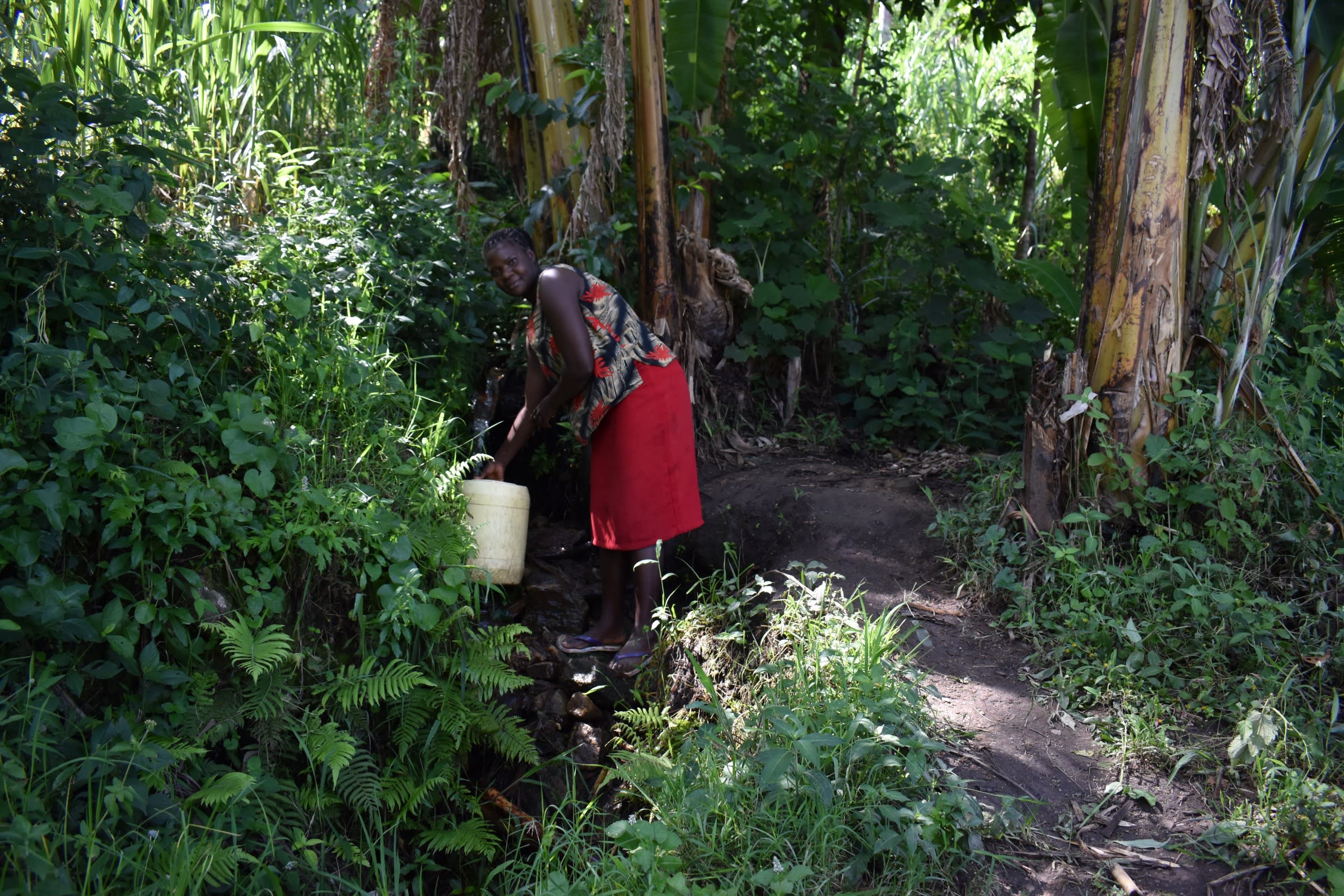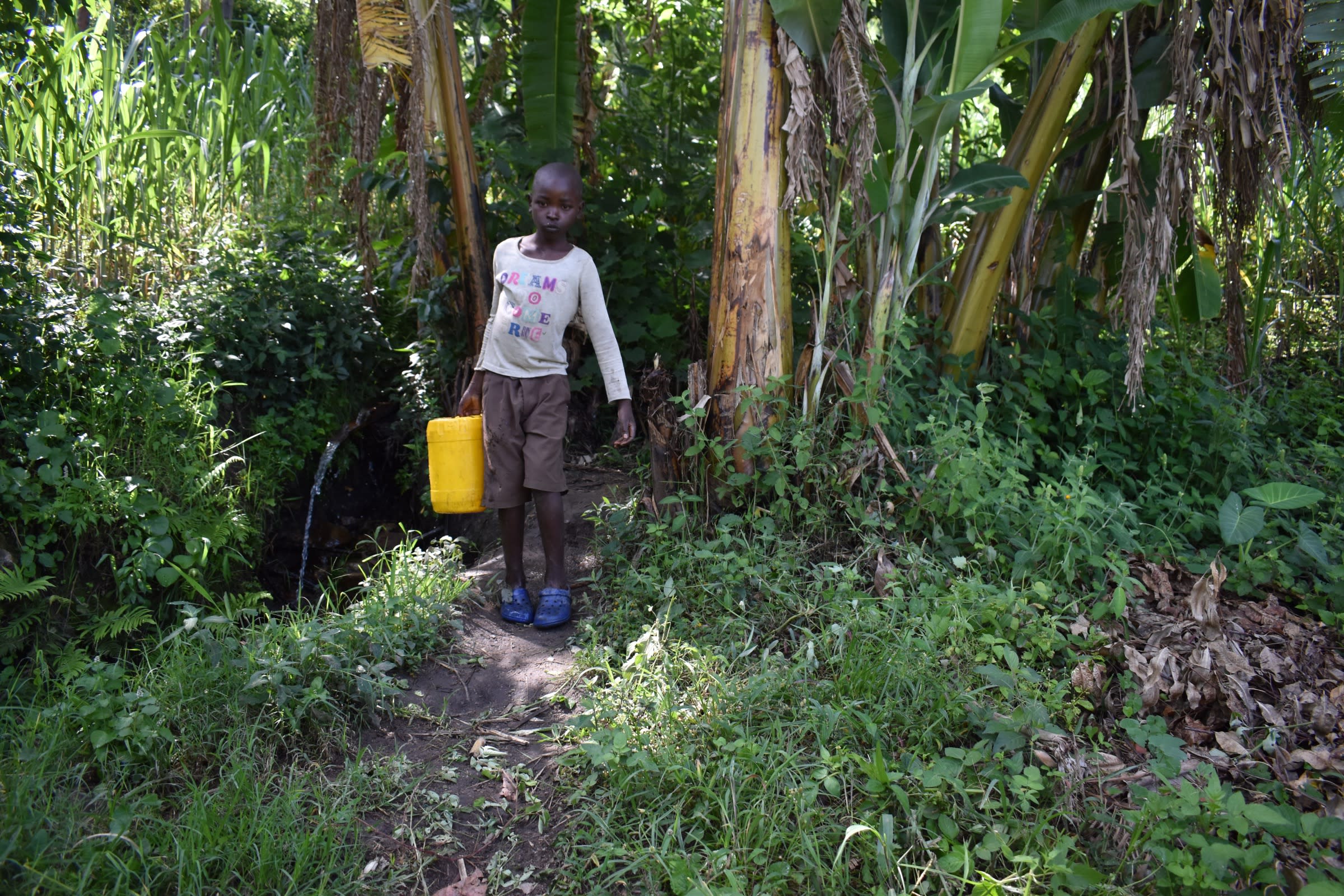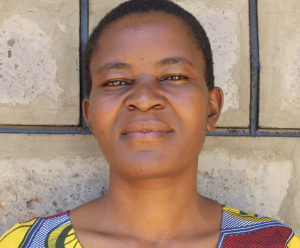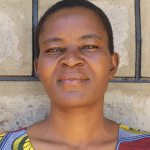Not only is Luvonga Spring difficult to access, but its water also makes everyone in Ikoli community sick.
While community members fetch water, there is no good place for them to stand due to the slippery area and flexible tree roots all around the eye of the spring. People frequently fall and suffer injuries, sometimes destroying their containers in the process.
Then, once people return home and drink the water, they often find themselves feeling worse and worse. The most-reported illnesses from drinking Luvonga's water are typhoid and amoeba, among others.

"[I] am personally affected with the current water situation because I have been ailing from Amoeba," said Livia Wafula, 26 (pictured above at the spring). "The medication was expensive, so [I] didn't finish the dose, and [now I] am not able to run the business I had."
Unfortunately, her situation is not unique. Many people in Ikoli have had to put normally essential tasks on hold due to water-related illnesses.
"My parents have spent a lot [of] money treating typhoid, but all was in vain," said Joseph K., 11 (in the picture below). He explained that because he has only been able to take the medicine sporadically, he still suffers from typhoid.

"We have nothing remaining to stabilize our family," Joseph said. "[I] am affected psychologically."
But as Joseph's shirt says, dreams do come true! Ikoli has high hopes for the implementation of the protected spring. Once they have a source of reliable, safe water, they will be able to save money, reopen businesses, and attend school as they should.
What We Can Do:
Spring Protection
Protecting the spring will help provide access to cleaner and safer water and reduce the time people have to spend to fetch it. Construction will keep surface runoff and other contaminants out of the water. With the community’s high involvement in the process, there should be a good sense of responsibility and ownership for the new clean water source.
Fetching water is a task predominantly carried out by women and young girls. Protecting the spring and offering training and support will, therefore, help empower the female members of the community by freeing up more of their time and energy to engage and invest in income-generating activities and their education.
Training on Health, Hygiene, COVID-19, and More
To hold trainings during the pandemic, we work closely with both community leaders and the local government to approve small groups to attend training. We ask community leaders to invite a select yet representative group of people to attend training who will then act as ambassadors to the rest of the community to share what they learn. We also communicate our expectations of physical distancing and wearing masks for all who choose to attend.
The training will focus on improved hygiene, health, and sanitation habits in this community. We will also have a dedicated session on COVID-19 symptoms, transmission routes, and prevention best practices.
With the community’s input, we will identify key leverage points where they can alter their practices at the personal, household, and community levels to affect change. This training will help to ensure participants have the knowledge they need about healthy practices and their importance to make the most of their water point as soon as water is flowing.
Our team of facilitators will use a variety of methods to train community members. Some of these methods include participatory hygiene and sanitation transformation, asset-based community development, group discussions, handouts, and demonstrations at the spring.
One of the most important issues we plan to cover is the handling, storage, and treatment of water. Having a clean water source will be extremely helpful, but it is useless if water gets contaminated by the time it is consumed. We and the community strongly believe that all of these components will work together to improve living standards here, which will help to unlock the potential for these community members to live better, healthier lives.
We will then conduct a small series of follow-up trainings before transitioning to our regularly scheduled support visits throughout the year.
Training will result in the formation of a water user committee, elected by their peers, that will oversee the operations and maintenance of the spring. The committee will enforce proper behavior around the spring and delegate tasks that will help preserve the site, such as building a fence and digging proper drainage channels. The fence will keep out destructive animals and unwanted waste, and the drainage will keep the area’s mosquito population at a minimum.

 Protected Spring
Protected Spring
 Rehabilitation Project
Rehabilitation Project




































